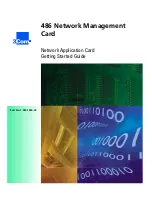
Introduction
94
SPRUH82C – April 2013 – Revised September 2016
Copyright © 2013–2016, Texas Instruments Incorporated
System Memory
4.1
Introduction
This device has multiple on-chip/off-chip memories and several external device interfaces associated with
the ARM and various subsystems. To help simplify software development, a unified memory-map is used
wherever possible to maintain a consistent view of device resources across all masters.
For details on the memory addresses, actual memory supported and accessibility by various bus masters,
see the detailed memory-map information in the device-specific data manual.
4.2
ARM Memories
The configuration for the ARM internal memory is:
•
8 KB ARM local RAM
•
64 KB ARM local ROM
•
16 KB Instruction Cache and 16 KB Data cache
The ARM RAM/ROM are only accessible by ARM and PRU0.
On-Chip RAM Memory
This device also offers an on-chip 128-KB single-port RAM, apart from the ARM internal memories. This
on-chip RAM is accessible by the ARM, and is also accessible by several master peripherals. Writes to
this RAM by all masters is atomic.
External Memories
This device has two external memory interfaces that provide multiple external memory options accessible
by the CPU and master peripherals:
•
EMIF:
–
8/16-bit wide (package dependent) asynchronous EMIF module that supports asynchronous
devices such as ASRAM, NAND Flash, and NOR Flash (up to 4 devices)
–
8/16-bit wide (package dependent) NAND Flash with 4-bit ECC (up to 4 devices)
–
16-bit SDRAM with 128-MB address space (package dependent)
•
DDR2/mDDR memory controller:
–
16-bit DDR2 with up to 256-MB memory address space
–
16-bit mDDR with up to 256-MB memory address space
Internal Peripherals
The peripheral only accessible by the ARM is the ARM interrupt controller (AINTC). For more information
on the AINTC, see the
ARM Interrupt Controller (AINTC)
chapter.
4.3
Peripherals
The ARM has access to all peripherals. This also includes system modules like the PLL controller (PLLC),
the power and sleep controller (PSC), and the system configuration module (SYSCFG). See the device-
specific data manual for the complete list of peripherals supported on your device.
















































